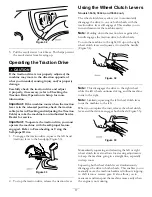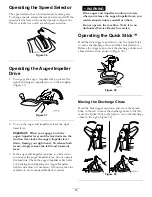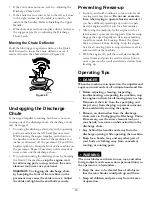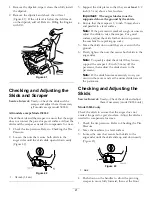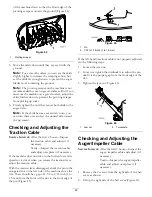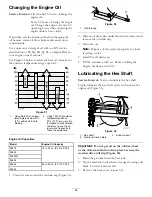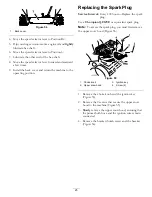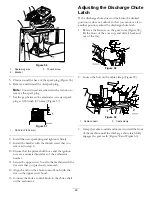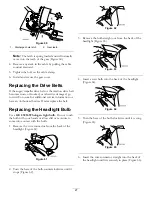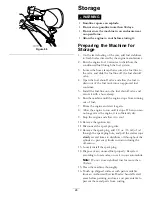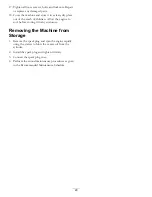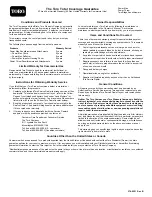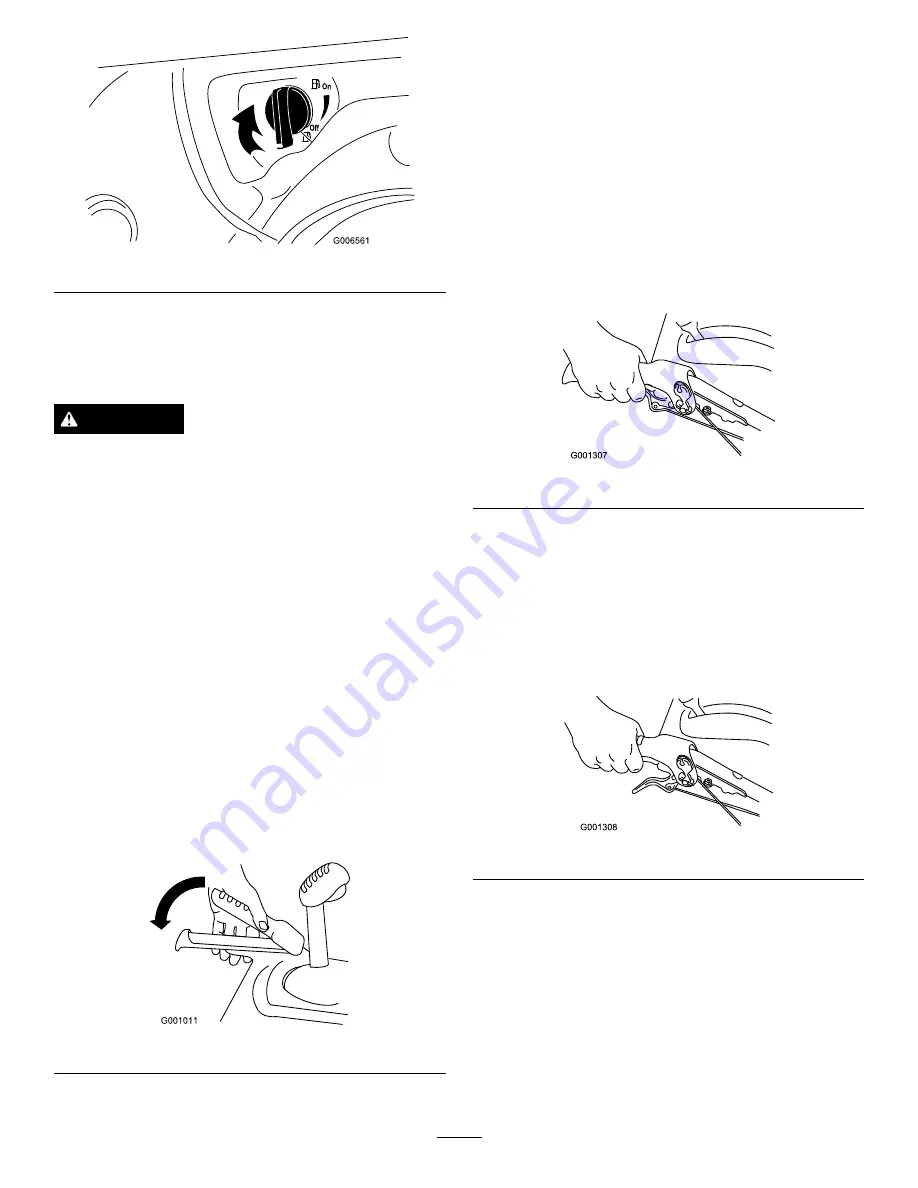
Figure 32
5. Pull the recoil starter 3 or 4 times. This helps prevent
the recoil starter from freezing up.
Operating the Traction Drive
CAUTION
If the traction drive is not properly adjusted, the
machine may move in the direction opposite of
what you intended, causing injury and/or property
damage.
Carefully check the traction drive and adjust
it properly, if necessary; refer to Checking the
Traction Drive Operation in Setup for more
information.
Important:
If the machine moves when the traction
lever is in the released position, check the traction
cable (refer to Checking and Adjusting the Traction
Cable) or take the machine to an Authorized Service
Dealer for service.
Important:
To operate the traction drive, you must
operate the machine with the self-propel feature
engaged. Refer to Freewheeling or Using the
Self-propel Drive.
1. To engage the traction drive, squeeze the left hand
(traction) lever to the handgrip (Figure 33).
Figure 33
2. To stop the traction drive, release the traction lever.
Using the Wheel Clutch Levers
Models 38634, 38644, and 38654 only
The wheel clutch levers allow you to momentarily
disengage the drive to one or both wheels with the
traction drive lever still engaged. This enables you to
turn and maneuver the machine easily.
Note:
Holding down the traction lever against the
handle engages the traction drive to both wheels.
To turn the machine to the right, lift up on the right
wheel clutch lever and squeeze it toward the handle
(Figure 34).
Figure 34
Note:
This disengages the drive to the right wheel
while the left wheel continues driving, and the machine
turns to the right.
Note:
Similarly, squeezing the left wheel clutch lever
turns the machine to the left.
When you complete the turn, release the wheel clutch
lever, and the drive re-engages both wheels (Figure 35).
Figure 35
Momentarily squeezing and releasing the left or right
wheel clutch lever also allows for steering adjustments
to keep the machine going in a straight line, especially
in deep snow.
Squeezing both wheel clutch levers simultaneously
disengages the drive to both wheels. This enables you to
manually move the machine backward without stopping
to shift it into a reverse gear. It also allows you to
maneuver and transport the machine more easily when
the engine is not running.
17















